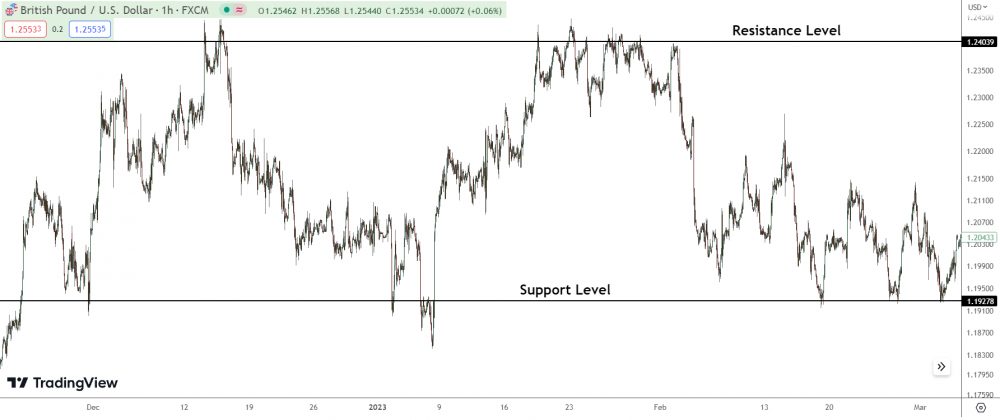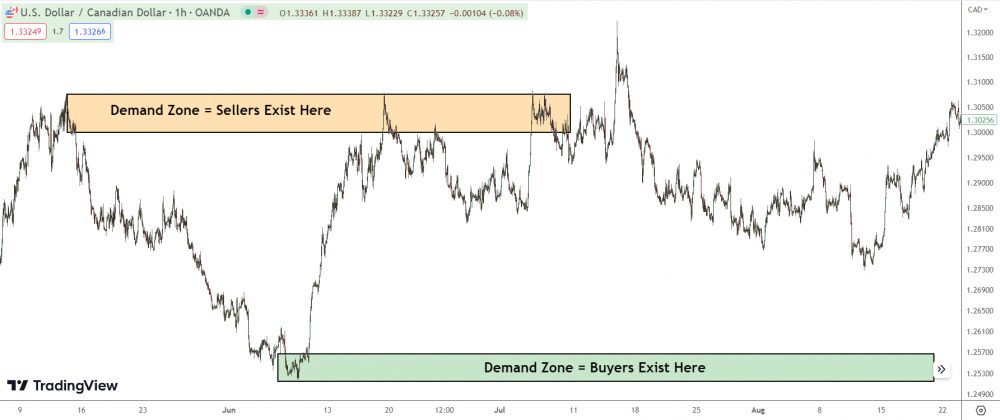Support/Resistance and Supply/Demand are two key concepts in trading, but they are NOT the same thing.
So let’s clear up any confusion.
Support and resistance are specific price points or narrow price ranges that a security’s price has had difficulty crossing historically.
Think of these as boundaries that price struggles to break.

Resistance is like a price ceiling that the currency has struggled to move above, while support is a price floor that the security has struggled to drop below.
On the other hand, supply and demand zones aren’t as precise.
They are wider price ranges within which buyers (demand) and sellers (supply) have previously entered the market in large quantities.
These zones encompass the battlefield between buyers and sellers, so to speak.

Supply zones are price ranges where sellers have overwhelmed buyers in the past, leading to a price drop. Demand zones are the opposite—price ranges where buyers have previously overwhelmed sellers, leading to a price increase.
In essence, while support and resistance levels are static price barriers, supply and demand zones are dynamic price ranges reflecting the aggregate buying and selling pressure.
Make sense?